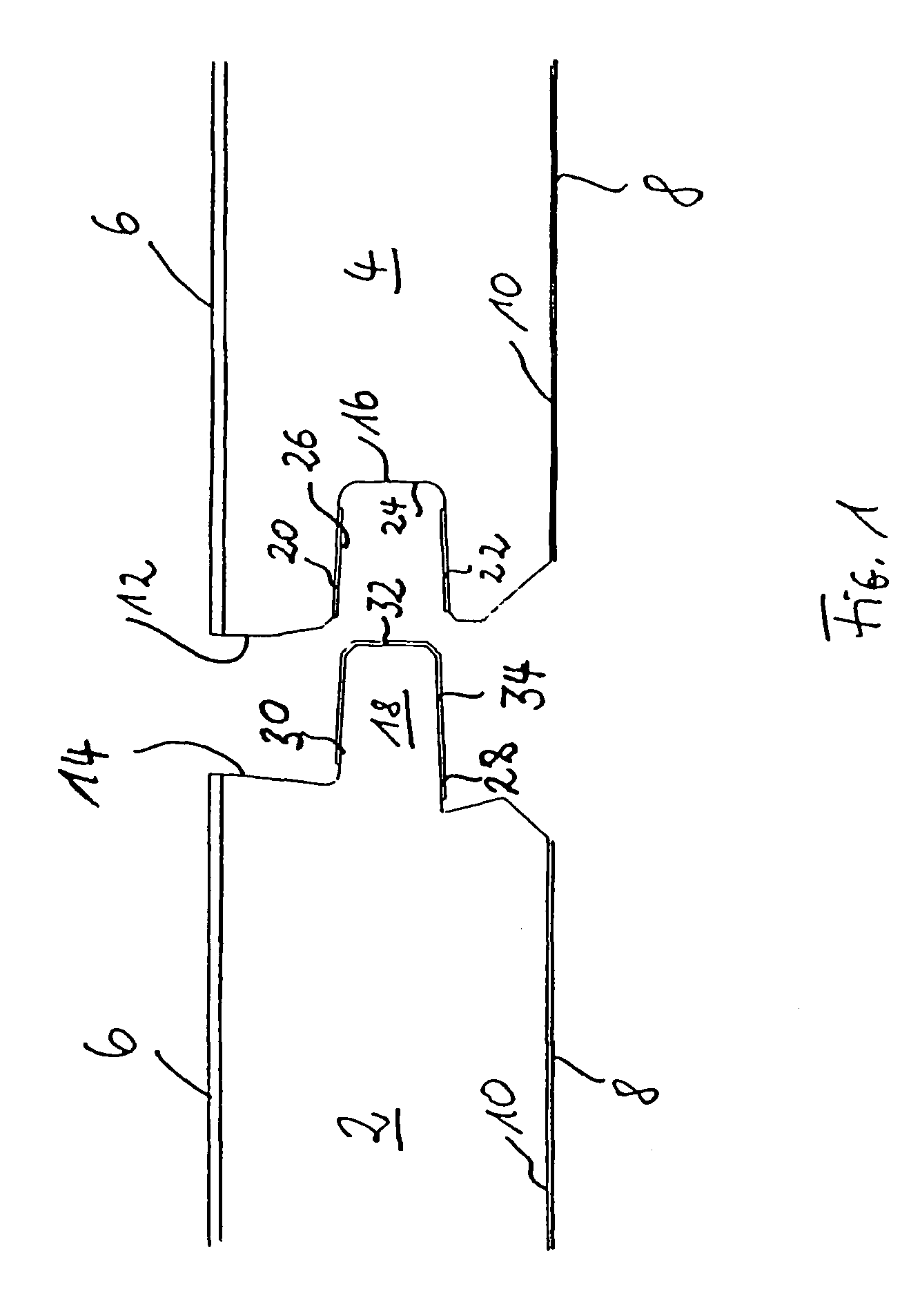Method for coating an element with glue
a technology of coating and glue, applied in the direction of lamination, structural elements, building components, etc., can solve the problem that the coating element may continue to feel a bit sticky, and achieve the effect of reducing the moisture content, and fast carrying ou
- Summary
- Abstract
- Description
- Claims
- Application Information
AI Technical Summary
Benefits of technology
Problems solved by technology
Method used
Image
Examples
Embodiment Construction
)
[0064]A chip board of medium density (MDF board) is divided up in panels 2, 4. Each panel 2, 4 has a decorative laminated top surface 6 and a bottom surface 10 provided with a counteracting layer 8. The edges 12, 14 are provided with a groove 16 or with a tongue 18 corresponding to the groove 16. A panel 2 has a groove 16 at its first edge 12 and, on a second edge 14 which extends in parallel to the first edge 12, a tongue 18 corresponding to the groove 16. This means that a plurality of panels 2, 4 can be joined to form a continuous surface.
[0065]The groove 16 has two surfaces 20, 22 which are approximately parallel and extend from a groove bottom 24 to the edge 12. An adhesive layer 26 is applied to the parallel surfaces 20, 22. The tongue 18 has two approximately parallel surfaces 28, 30 extending from the edge 14 to a tongue end 32. The tongue 18 is dimensioned such that it positively engages the groove 16 when the panels 2, 4 are joined together. The surfaces 28, 30 of the ton...
PUM
| Property | Measurement | Unit |
|---|---|---|
| glass transition temperature | aaaaa | aaaaa |
| glass transition temperature | aaaaa | aaaaa |
| elongation at tear | aaaaa | aaaaa |
Abstract
Description
Claims
Application Information
 Login to View More
Login to View More - R&D
- Intellectual Property
- Life Sciences
- Materials
- Tech Scout
- Unparalleled Data Quality
- Higher Quality Content
- 60% Fewer Hallucinations
Browse by: Latest US Patents, China's latest patents, Technical Efficacy Thesaurus, Application Domain, Technology Topic, Popular Technical Reports.
© 2025 PatSnap. All rights reserved.Legal|Privacy policy|Modern Slavery Act Transparency Statement|Sitemap|About US| Contact US: help@patsnap.com


